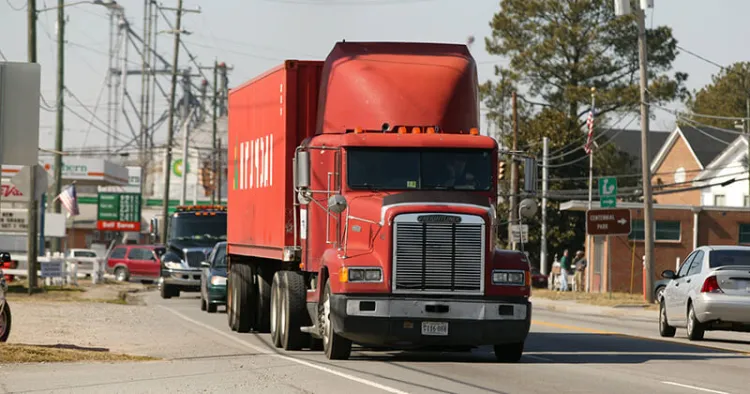National Assessment of Near Roadway Vehicle Traffic Emissions Exposure Risk

We completed a national scale study to evaluate exposure risk to air pollution from on-road vehicle traffic in every community. The project identifies exposure risk to emissions from different types of vehicle traffic, including passenger vehicles and trucks and evaluate how exposure risk varies with the socioeconomic composition of communities.
Principal Investigator: Gregory Rowangould
Project Sponsor: Environmental Defense Fund
More about National Assessment of Near Roadway Vehicle Traffic Emissions Exposure Risk
Exposure-based Extreme Heat Vulnerability Mapping to Inform Adaptation and Mitigation of Extreme Heat Exposure Risk in Small Cities and Rural Settlements

This project will identify where people all across Vermont are exposed to excessive heat produced by transportation infrastructure, map areas of vulnerability (where there is higher heat and populations at greater risk of adverse health impacts from heat exposure), and help state and municipal agencies target solutions to the places and people that most need them.
Principal Investigators: Elizabeth Doran and Gregory Rowangould
Project Sponsor: NOAA
Read news report about this project
A National Assessment of the Air Quality and Health Impacts of Vehicle Travel and Electrification: Phase 1 Near Roadway Impacts and Equity Analysis

On-road vehicle traffic is one of the largest sources of hazardous air pollutant and greenhouse gas emissions in the United States. Underserved communities are consistently found to bear a disproportionate share of exposure to on-road vehicle traffic emissions while they are also expected to be disproportionally impacted by climate change. Recent studies have also called more attention to the air quality impacts of medium- and heavy-duty vehicles, which emit significantly higher levels of air pollutants than light-duty vehicle traffic and are a known driver of racial, ethnic, and socioeconomic disparities in exposure to air pollutants. While prior studies find that electrification of the on-road vehicle fleet can significantly reduce greenhouse gas emissions, improvement in air quality is far less certain. One challenge is that most national scale air quality analysis are too coarse to identify impacts within underserved communities or account for near-roadway exposures. Additionally, most studies have focused on endpoints, points in time when a large portion of vehicles are expected to be electric. The air quality impacts and environmental justice concerns during the transition period which could be long and uneven has received little attention. This research will address these limitations by using a refined near-roadway emission exposure surrogate that balances spatial precision and computational burden allowing the research team to estimate changes in exposure levels and health risks and the distribution of these burdens over time as EV adoption increases. The analysis will be carried out for every US census block over a 40-year transition period
Principal Investigator: Gregory Rowangould
Project Sponsor: National Center for Sustainable Transportation
Bridge-steam network assessment to identify sensitive structural, hydraulic and landscape parameters for planning flood mitigation

This project will develop an analysis method to understand how localized changes at a given bridge, stream or road affect the entire river corridor. This will help transportation agencies in managing their bridge and stream assets for maintenance and capital planning for upgrades, and also address stakeholder concerns raised in response to planned alterations.
Principal Investigator: Mandar Dewoolkar
Co-investigators: Donna Rizzo and Arne Bomblies
Project Sponsor: Transportation Infrastructure Durability Center
Development and Application of a Cost-Benefit Tool for Quantifying External Social Impacts of Small to Mid-Size Transportation Projects

This project will focus on developing methods for quantifying the external social costs of transportation civil infrastructure projects, particularly small to mid-size projects that are common in New England states.
Principal Investigator: Mandar Dewoolkar, Dana Rowangould, John Lens, Greg Rowangould
Project Sponsor: Transportation Infrastructure Durability Center
Uncovering Barriers to Low-Carbon Travel to Strengthen Transportation Infrastructure in Rural Communities

This project fills a critical gap in knowledge about rural travel behavior by creating a novel spatially detailed panel dataset. The dataset tracks changes in travel behavior over time, supporting an analysis of peoples’ responses to changes in transportation and land use systems. This research will help small and rural communities achieve deep reductions in GHG emissions by providing insights into how to leverage transportation infrastructure investments, technology, and policies to reduce GHGs while supporting economic vitality, mobility, and equity.
Principal Investigator: Dana Rowangould, Greg Rowangould, Elizabeth Doran
Project Sponsor: National Science Foundation